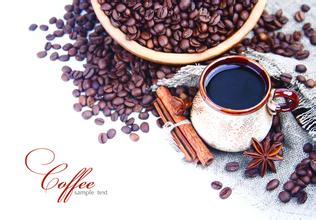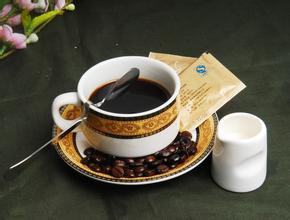Description of washing Flavor of Brazilian Sun Yellow bourbon Coffee beans introduction to the characteristics of Grinding scale and Manor
Description of washing Flavor of Brazilian Sun Yellow bourbon Coffee beans introduction to the characteristics of Grinding scale and Manor
Including all coffee beans grown in Brazil, except for Santos, Brazilian beans are mostly "cheap and good" coffee. Can be used for mass production of comprehensive coffee beans, most of which are re-roasted. The main raw material of instant coffee is also Brazilian coffee beans. When the coffee bean germ is very fresh, it is artificially refined and naturally dried in the vulva for about 60-70 days, so that the sweetness of the pulp fully infiltrates into the bean. Features: coffee beans have a strong aroma, moderate bitterness, high texture acidity, soft overall taste, low acidity and endless aftertaste. The taste of Brazilian coffee has a low sour taste, with the sweet and bitter taste of coffee, the entrance is very smooth, but also with a hint of grass aroma, slightly bitter in the fragrance, smooth and smooth, with a pleasant aftertaste. There are no outstanding advantages for Brazilian coffee, but there are no obvious drawbacks. It has a mild and smooth taste, low acidity and moderate mellowness.
After baking for 4 times, it is better to choose between 1 minute and 15-20 seconds after the end of the explosion. Taste with obvious sweetness, but not so boring sweet, the background with a hint of lemon aroma, this aroma is more prominent in the wet fragrance stage, the latter part of the performance has an obvious taste of dark chocolate, the overall feeling is more round, while reflecting the overall characteristics of Brazil, without losing liveliness. The size of the coffee beans is 17gram and 18 eyes, the color is clear and smooth, and it is very fresh. Coffee beans are treated with pulped natural and dried in the sun, that is, the coffee is mechanically peeled, leaving the seeds and pulp of the coffee, and then sun-dried. The harvest season is from March to June every year, and this batch of beans is the latest batch of beans. This bean is Carmo from Minas, Brazil. Carmo belongs to the region with high elevation in Brazil, and it is also one of the regions that produce high-quality Brazilian coffee. Such as the sign on the sack (yellow bourbon), this bean is Huangbo species, from the small farm COIOTE ESTATE, the annual output is only 1000 hemp bags. By EISA (Empresa Interagricola. S. A) the company purchases and exports the coffee, and the coffee purchased through the company is marked EISA or Interagricola on the sack.
Brazilian coffee fields are endless and are mostly harvested mechanically in order to meet the economic benefits. When 75% of the coffee fruit in the coffee garden turns red, mechanical harvesting is started, followed by the same pre-washing operation, which is moved into the sink to remove floating beans, sift out the sunken beans, and then use a large pulp screening machine to dig out the pulp and remove the pods covered with pectin. The next stage is separate from the washing method: the sticky pods do not need to be moved into the tank to ferment, but to the outdoor bean drying farm, because the climate in Brazil is very dry, the sticky pectin on the pods will harden in about a day or so.

Important Notice :
前街咖啡 FrontStreet Coffee has moved to new addredd:
FrontStreet Coffee Address: 315,Donghua East Road,GuangZhou
Tel:020 38364473
- Prev

Flavor description of Burundian coffee beans introduction to the taste of Burundian coffee beans produced by grinding scale treatment
Burundian coffee beans flavor description grinding scale processing French production region taste introduction East Asian and Pacific Islands Chinese mainland: Yunnan Coffee, Hainan Coffee Taiwan: Gukeng Coffee, Dongshan Coffee, Dawushan Coffee, Bamboo Mountain Coffee Hawaii: Kona East Timor: Maubbessee Coffee Beverage Coffee Shop offers many varieties of coffee
- Next

Sitama Coffee Flavor Description Characteristics Taste Treatment Method Production Area Grinding Scale Variety Introduction
Coffee is Ethiopia's most important export cash crop and the main source of Ethiopia's foreign exchange earnings. Ethiopia's coffee exports account for about 3% of the world market share, making it the eighth largest coffee exporter in the world. Coffee exports increased steadily from 58,000 tons in 1990- 91 to 1995 - 96
Related
- Detailed explanation of Jadeite planting Land in Panamanian Jadeite Manor introduction to the grading system of Jadeite competitive bidding, Red bid, Green bid and Rose Summer
- Story of Coffee planting in Brenka region of Costa Rica Stonehenge Manor anaerobic heavy honey treatment of flavor mouth
- What's on the barrel of Blue Mountain Coffee beans?
- Can American coffee also pull flowers? How to use hot American style to pull out a good-looking pattern?
- Can you make a cold extract with coffee beans? What is the right proportion for cold-extracted coffee formula?
- Indonesian PWN Gold Mandrine Coffee Origin Features Flavor How to Chong? Mandolin coffee is American.
- A brief introduction to the flavor characteristics of Brazilian yellow bourbon coffee beans
- What is the effect of different water quality on the flavor of cold-extracted coffee? What kind of water is best for brewing coffee?
- Why do you think of Rose Summer whenever you mention Panamanian coffee?
- Introduction to the characteristics of authentic blue mountain coffee bean producing areas? What is the CIB Coffee Authority in Jamaica?

